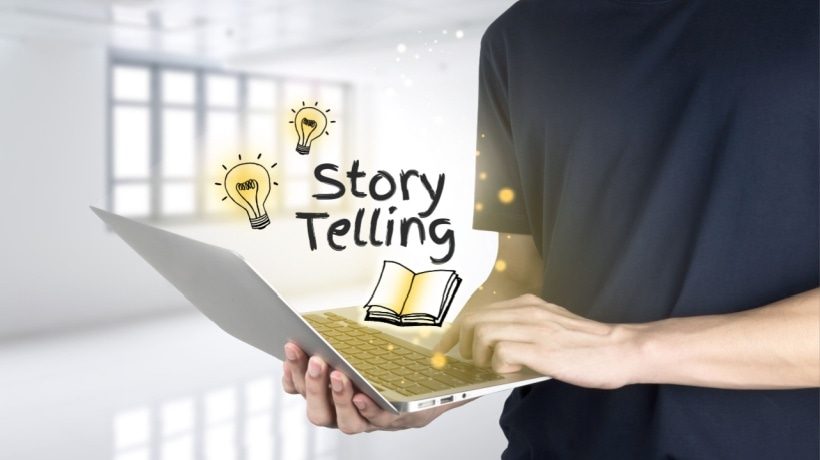Using Storytelling To Make Education Valuable
The question is, what makes it meaningful? There are many answers out there based on different points of view, but the most common one is stories. Through stories we share information and learn about life and learn from each other. The way we tell stories, known as storytelling, has an enormous effect on the way people achieve them. In education, good storytelling can transform a not-so-good lecture and make it more valuable.
The Power Of Storytelling
In 2006, a New York Times Magazine journalist, Rob Walker, and Josh Glenn, writer of Taking Things Seriously, created a project called Significant Objects. They aimed to quantify the power of storytelling via eBay. How did they do it?
First, they ordered 200 items of low value (e.g., candleholder, wire basket, corked bottle, plastic banana, etc.), the average cost was $1.25 per item, that didn’t hold any intrinsic value. And then, Walker and Glenn invited 200 different authors to each write a story about one of the objects. This object would later be auctioned on eBay with its written story attached in the description box.
One of the items was a snow globe which was originally priced at 99 cents. But after Blake Butler, one of 200 authors who participated in this study, wrote a 400-word story about it, the price went up to $59.00. This is not a special exception. Walker and Glenn originally spent a total of $197 and ended up selling 200 items for $8,000—over 6,300% higher than before.
What we can learn from this study is that stories give life to everything, even if it doesn’t have any meaning at all. Peter Guber, the former CEO of Sony Pictures said:
In this age of rapid technological change, it’s not the zeros and the ones of the digital evolution, but rather the oohs and aahs of a good story that offer the best chance of compelling listeners to act on behalf of a worthy goal.
At the heart of educational animation, the core value we all aspire to achieve is that deep connection with the learners to make them feel like being educated while talking to a close friend. Animation is a brilliant medium to deliver stories that can both benefit cognitive learning and "emotional touching." We can easily present imaginative tales, meaningful metaphors, and directed emphasis to achieve desired behaviors through the simulation of the intended result by using the storytelling method.
5 Tips On How To Use Storytelling
1. Define A Clear Purpose
Without a goal, you can be lost! Although this preparation stage seems to be unnecessary, believe me, the result will be much better and on point. So what is the objective of your story? Is it for entertainment, to create a welcoming atmosphere before class? Or does it serve as an extra information piece for learners’ interests? The clearer you define the purpose, the easier you can make decisions in later stages.
Moreover, not only can you define the purpose, but you can also clarify your audiences. Their demographics, social habits, and psychographics have a huge effect on their story interests and learning habits. Let’s say you’re designing a course for primary school students, the stories included should be simpler and more light-hearted than in corporate training. By learning about your audiences, you can engage more deeply with them.
2. Paint The Scene
It’s crucial that your audience knows the background of the story: when and where it took place, who was there, what originally led to the event. Painting the whole picture guarantees they won't get lost and, above all, helps them understand more about why your story is being told.
Take a look at this video named MAN. It only took 3 seconds (from 00:04 to 00:07) for us to find out about the story background. Simple as it is!
3. Be Your Own Audience
When listening to a story, hormones and neurotransmitters in your brain are released. They’re different depending on the story’s content and storytelling.
- Dopamine
All storytelling is, by definition, dopamine-creating. Listeners will focus more and have higher motivation. - Oxytocin
This is the most beautiful hormone of all because you feel human. Good stories create empathy. When you have oxytocin in your blood, you become more generous, you trust more and bond with the storyteller. - Endorphins
These are released when people laugh. What happens then is that they become more creative, more relaxed, and more focused.
Now that you know about the incredible effects of telling stories, you can choose a suitable type of storytelling to achieve the desired effects from your learners.
However, it’s not always about what you want to put in your educational video, remember to put yourself in the audiences’ shoes. Too many jokes or too many moving stories can turn them away. It’s not about what you do, but how you do it. Information-providing, storytelling, and entertaining should be divided into reasonable portions. In this way, you can enhance the learning experience and make the course more pleasant for learners.
4. Make Your Characters Come Alive
Everyone on earth is different, even twins and triplets. Therefore, it’s recommended that you build a complete profile for each of your characters (e.g., gender, age, hobbies, etc.). All these elements contribute to the whole picture of the characters and later on affect the way they behave. Furthermore, if you intend to make an educational animation video with characters, please don’t use only one voice over for all of them. The way we speak, our accents, stress, and use of slang in real life differentiates from person to person, so it’s nonsense that 4 or 5 characters would have the same way of talking. If hiring more voice-over actors is over your budget, don’t hesitate to ask a friend or a family member. It’s fun to take part in it, so I’m sure they will happily agree.
5. Rethink And Rethink Again
We all know how exciting it is when an amazing idea finally pops up inside your head. If you’ve been stuck for a while now, this is a true life-saver. But wait, let’s take it slow. It may sound wonderful now when you’re overwhelmed with excitement. However, you need to consider the entire picture, the plot, character behaviors, the ending, etc., to make sure that it makes sense. Sometimes, you need to sacrifice some good ideas for a better "whole" story.
Actually, this tip is applied in every discipline and job out there. Reading a book is a good idea if you want to start. One good book I’d recommend is Animated Storytelling: Simple Steps for Creating Animation and Motion Graphics by Liz Blazer. It provides simple guides for beginners so it’s quite easy to follow. And remember “good things take time,” so don’t be afraid if your production doesn’t work out well. Find out what’s wrong and learn from it, you’ll be making progress soon.
Do you remember how Isaac Newton discovered gravity? Can you remember how Archimedes uncovered his most famous principle on fluid and solid dynamics? I bet most of us do remember it. And, do you know why? Because there are fascinating stories behind each of these breakthroughs. Newton was sitting under the shade of an apple tree when he wondered why all the apples fall down to the earth but not the other way. And when Archimedes stepped into a bath and noticed that the water level rose, he had such an extremely significant realization that he couldn't wait to share it, so he ran naked through the streets of Syracuse.
Exciting stories imprint on human’s minds and make the related information much more memorable. Next time you want to emphasize important data, instead of repeating it all over again, try telling an engaging story or a fact, or some behind-the-scene details.







